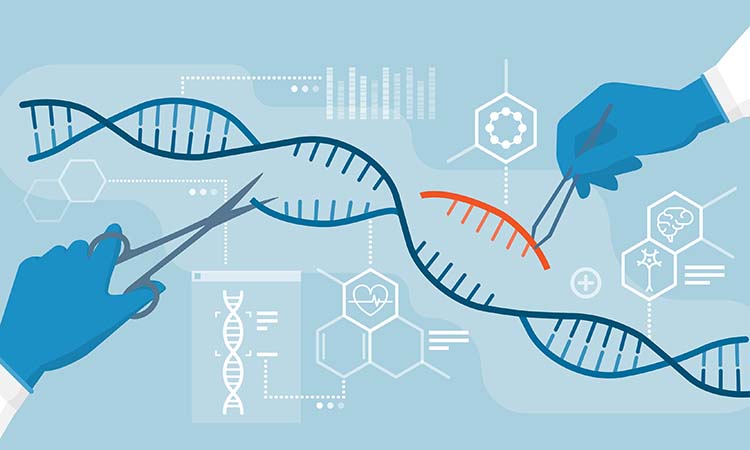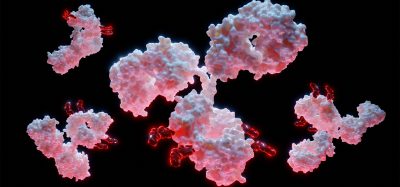Next-generation CRISPR technologies for treating human diseases
Posted: 15 September 2022 | Dr Pushpanathan Muthuirulan (Harvard University) | No comments yet
Genome editing technologies could accelerate the translation of genetic advances into new therapeutics. Here, Dr Pushpanathan Muthuirulan, Research Associate at Harvard University, explores the potential of CRISPR to treat and cure genetic conditions.

A series of breakthrough discoveries harnessing the bacterial adaptive system to perform targeted genome editing holds great promise to transform therapies for complex heritable diseases. We are currently witnessing the tremendous potential of CRISPR technology in treating diseases, ranging from sickle cell disease to blindness. In just a decade, CRISPR has become one of the most celebrated inventions in modern science and has resulted in several successful human clinical trials. For example, 42 β-thalassemia patients no longer require regular blood transfusions and transthyretin amyloidosis patients have been successfully treated with a single dose for more than a year.
Despite the great success of treating patients using CRISPR technology, over 7,000 human genetic diseases still require treatments, with only a few of them having approved therapies. Next‑generation gene editing technologies like base-editing and prime editing could accelerate the development of cures for genetic diseases. These technologies would enable precise editing of many genetic variants that would influence individual trait profiles and disease susceptibility.
In recent years, genome-wide association studies (GWAS) have successfully uncovered thousands of genetic loci associated with complex genetic diseases. These associations could reveal the genetic cause of complex diseases and result in the discovery of novel drug targets. However, GWAS still have many unanswered questions, as more than 90 percent of disease‑associated genetic variants lie in non-coding regions of the genome that likely modulate the transcription of genes in a cell type-specific manner.
Gaining insights into the biology of complex traits from GWAS requires identifying the causal variants, target genes and importantly, linking the causal variants and target genes to molecular, cellular and physiological phenotypes. This method has hindered the translation of GWAS findings into clinical interventions. Precise editing of GWAS genetic variants using CRISPR technology would allow the development of a unique CRISPR-based therapy in patients. Accelerating the development of programmable genome insertion tools, such as PASTE and Twin-PE, will provide a platform with broad applications in basic research, cell engineering and gene therapy. PGI tools can treat all variants of a disease with a single therapy and offer opportunities for in vivo cell engineering. As these programmable genome insertion tools become more complex, requiring additional enzymes and multiple guide RNAs, there are more challenges in delivery and efficiency. However, with time, these challenges will be addressed and a mature CRISPR genome editing toolbox will offer revolutionary therapeutic benefits to patients.
The elegant parallel of using CRISPR to understand disease mechanisms
In the next decade, we predict several significant areas where advances are likely to occur. For example, functional genomics experiments, especially in high‑throughput, performed in disease‑relevant cell types, will be further developed. In addition, addressing issues that affect the utilisation of CRISPR technology will allow us to take advantage of this technology to find a cure for genetic diseases.
Although CRISPR technology has been rapidly advanced by fine-tuning the architecture of nucleases (Cas proteins) to increase the delivery, efficiency, specificity and targetability, there remain other challenges to overcome before its full potential can be realised. Thus, the next-generation genome editing technologies such as base editors and prime editors will undoubtedly spur progress in human gene editing and accelerate the translation of genetic advances to novel therapeutics.
About the author
Dr Pushpanathan Muthuirulan is currently a Research Associate at Harvard University studying the developmental and genetic basis of human height variations using functional genomics approaches. Previously, he worked as a Postdoctoral Researcher at the National Institutes of Health, where his research focused on developing state‑of‑the‑art technologies using CRISPR-Cas9 and super‑resolution microscopy to map neural circuits that involves visual motion information processing in Drosophila. His expertise lies in omics technologies, drug discovery, neuroscience and developmental and evolutionary genetics.
Reference
- Rosetta | Cancer Grand Challenges [Internet]. Cancergrandchallenges.org. 2022 [cited 30 May 2022]. Available from:
https://cancergrandchallenges.org/teams/rosetta
Related topics
CRISPR, Drug Development, Genome Editing, Genomics
Related conditions
transthyretin amyloidosis, β-thalassemia (TDT)
Related organisations
Harvard University







